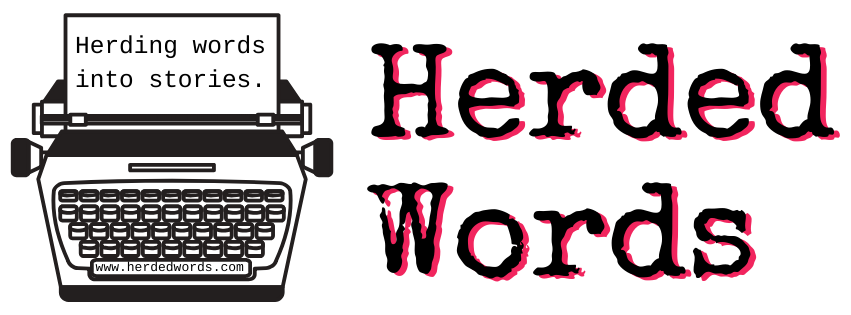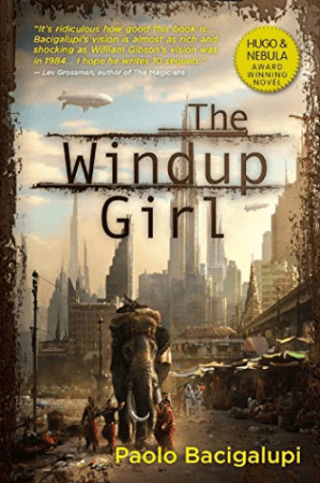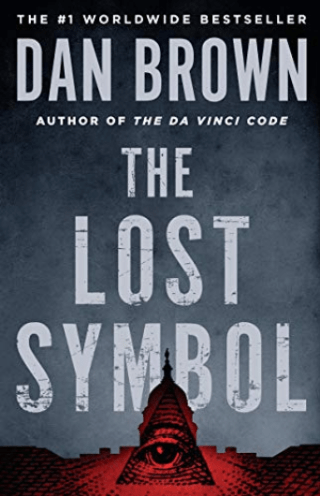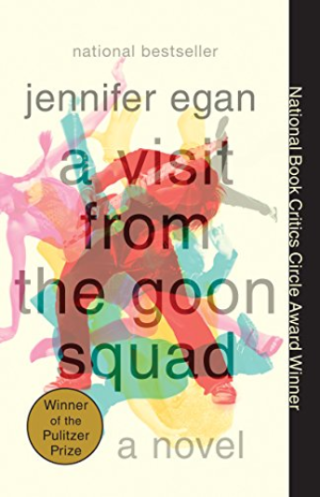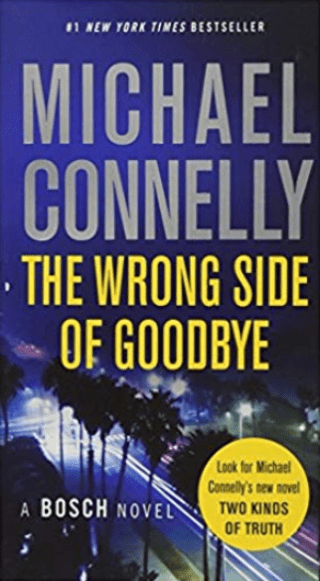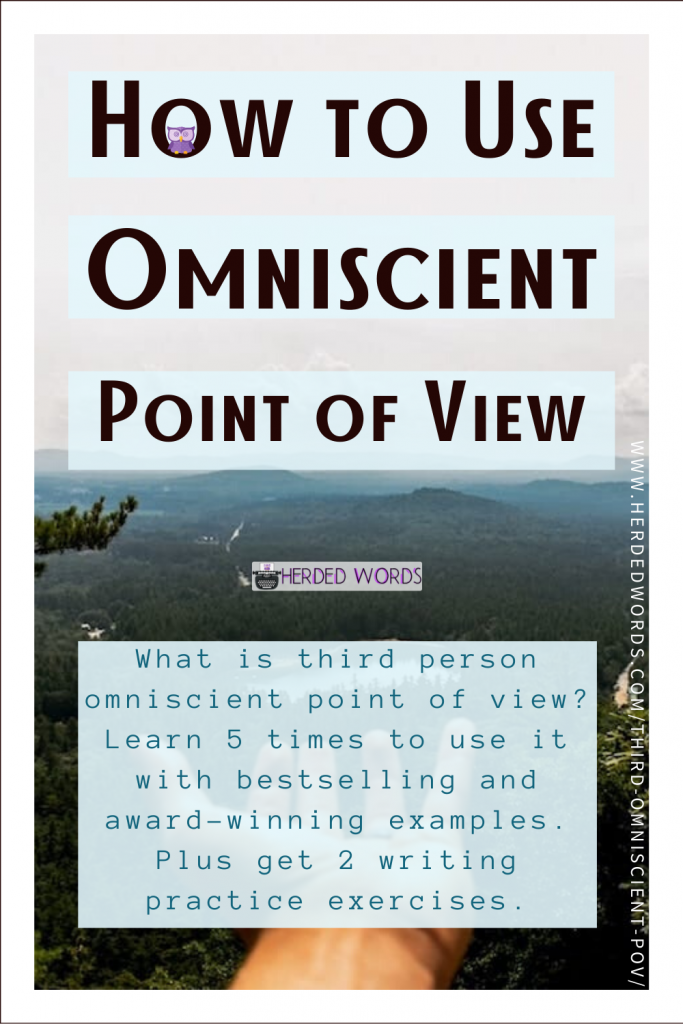
Herdedwords.com uses affiliate links. This means we receive a commission on the sale of certain items. This is at NO additional cost to you. Visit the policies page to learn more.
Who’s telling this story?
She is!
Only her!
A novels point of view is where the story is being told from. It affects the knowledge of the narrator and how the story unfolds.
There are 4 different points of view you can write a novel in:
- First Person Point of View
- Second Person Point of View
- Third Person Limited Point of View
- Omniscient Point of View
Today, we’ll deep dive into the third person limited point of view.
Table of Contents
What is Third Person Point of View?
If a story is written using the third person point of view, the narrator will be someone (something?) watching the character. You see, hear, smell, feel, and taste everything because of the narrator.
John entered a competition. It came down to the last round and it was just him versus Jane. He likes to think of himself as the best. However, it is not his decision to make.
The judges will decide the winner for themselves after they watch them compete. The round itself will be difficult. It will require all their focus.
Jane hopes she can win. Her mother taught her everything she knows. Her mother is watching from the stands chanting “it’s hers” to herself.
The prize for winning is only $10 but John and Jane both want it to be theirs.
The last word is its – which indicates possession – if you want to say it is, use it’s. When you’re using it as possession use its. My phone loses its charge after 2 hours, it’s terrible!
He, his, him, himself, she, her, hers, herself, they, their, theirs, them, themselves, it, its, and itself are all third-person pronouns.
There are two types of third person POV – Limited and Omniscient.
What is Third Person Limited Point of View?
A third person limited narrator will be stuck to a single character. They will only know what that character knows (sees, thinks, feels, etc). This doesn’t mean that EVERYTHING the character experiences must be revealed. But, you may never reveal something the character couldn’t know. You should vary the perspective. Three common limited viewpoints are
| Deep POV | Light POV | Overview POV |
| Very intense | Not intense | Bigger picture |
| It’s like being stuck right on the shoulder of the character. | It’s like taking a couple steps back from the character. | It’s like hovering above the character. |
| Everything that’s happening is shared. | Actions and events are shared but thoughts are probably not. | Thoughts are not shared. |
| Great for short but very emotional scenes or the most intense parts of action scenes. | Great for scenes that are a bit heavy on the telling. | Great for setting and exposition. |
Make sure when writing in third person limited that you vary your perspective. Get in close sometimes, step back a little or a lot. Don’t remain static!
Use Third Person Limited Point of View to…
Let’s look at four great times to choose the third-person limited POV for your novel.
#1 – Evolve Reader Perspective
Third person limited works a lot like first person. It enables a reader to experience the emotions of what’s happening. This makes it more likely that you can have the readers opinions of characters grow and change.
For example, you could start a character as unlikable. As the novel progresses, the character could behave in a more likable way. In the end, the readers’ opinion of the character should have changed.
Example: THE WINDUP GIRL
THE WINDUP GIRL, published in 2009, is a science fiction novel by Paolo Bacigalupi.
THE WINDUP GIRL won the 2010 Hugo Award.
THE WINDUP GIRL has several prominent characters. Some of them change and develop a lot over the course of the novel. Some of them barely change at all. I felt that my initial impressions of characters were sometimes very incorrect and my opinions changed. Or, if my initial impressions were correct, then many of the characters changed in some way. THE WINDUP GIRL is full of strong character development.
The old Chinese man is nothing but a scarecrow, dressed in rags, but still, he is lucky. Alive, when most of his people are dead.
#2 – Maintain Uncertainty (especially of secondary characters)
Since third person limited follows only one character (at a time), it’s a great way to maintain a sense of uncertainty about other characters. Emotions, motivations and the pasts of other characters are only revealed if the POV character knows.
Example: THE LOST SYMBOL
THE LOST SYMBOL, published in 2009, is a mystery, thriller & suspense novel by Dan Brown.
THE LOST SYMBOL spent 10 weeks at #1 on the NYT Bestseller List. Between 2009 and 2018, Dan Brown spent a total of 22 weeks at #1 on the NYT Bestseller list.
Robert Langdon is the main character in THE LOST SYMBOL. He’s a fully developed character.
Langdon isn’t the only point of view character, but he is the major one. The novel is set up so that there’s almost always more questions than answers about everyone and everything.
The uncertainty is strong in this book.
Langdon was liking Director Sato less and less with each passing moment.
Example: REDSHIRTS
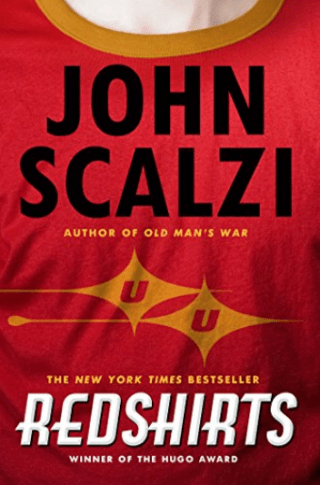
REDSHIRTS, published in 2012, is a Science Fiction novel by John Scalzi. It won the 2013 Hugo Award.
REDSHIRTS is supposedly based loosely on STAR TREK (the TV series).
I’ve never seen a single episode of the show so I might have missed and/or misunderstood parts of this book. To me, it belongs firmly in the “uncertain characters” category – but maybe if you’re a STAR TREK fan, it doesn’t.
This reminded Dahl that he needed to check on the status of the coffee pot. Cassaway had been the last one to get a cup; Dahl looked up to ask him if it was time for him to start another pot.
#3 – Demonstrate Character Flaws
The biggest difference between first person and third person limited is the distance.
First person is all me, me, me! Third person takes a small step back from that and is her, her, her.
This small step is enough to enable a writer to show that a character has flaws, issues, problems. Ones that they might not admit to themselves (as in first person) but that are obvious by another (as in third person).
Example: A VISIT FROM THE GOON SQUAD
A VISIT FROM THE GOON SQUAD, published in 2010, is a collection of short stories by Jennifer Egan.
A VISIT FROM THE GOON SQUAD won the 2011 Pulitzer Prize for Fiction.
A VISIT FROM THE GOON SQUAD is a collection of short stories that flow together and feel like a novel.
The use of third person, for most of the stories, helps that flow. Each story can follow a different character (or set of characters) without the narration feeling forced or jarring.
Furthermore, it enables the author to demonstrate more of their flaws. They’re short stories so the time to develop the characters is much less.
She’d glimpsed the wallet, tender and overripe as a peach. She’d plucked it from the woman’s bag and slipped it into her own small handbag, which she’d zipped shut before the sound of peeing had stopped.
#4 – Write a Mystery
Third person limited POV is the ideal point of view for mystery novels. The narrator can move between multiple characters and be a bit analytical about what’s happening.
Example: THE WRONG SIDE OF GOODBYE
THE WRONG SIDE OF GOODBYE, published in 2016, is a mystery, thriller, & suspense novel by Michael Connelly. It’s book 19 in the Harry Bosch series.
THE WRONG SIDE OF GOODBYE spent 2 weeks at #1 on the NYT Bestseller List. Between 2009 and 2018, Michael Connelly spent a total of 12 weeks at #1 on the NYT Bestseller list.
THE WRONG SIDE OF GOODBYE follows Harry Bosch as he tries to find the answers to a mystery.
The novel makes good use of different third person limited perspectives to drive the plot along and keep the reader engaged in the mystery.
After intriguing Bosch with his request Vance used a shaky left hand to flip over the piece of paper on his desk and told Bosch he would have to sign it before they discussed anything further.

Writing Practice
Today we’re going to practice writing third person limited POV by modifying sections of LITTLE RED RIDING HOOD.
We’ll be using the version ‘LITTLE RED-CAP’ written by the Brothers Grimm. If you’re not familiar with the story, take 5 minutes to give it a read.
Exercise #1: Rewrite
The excerpt below is a lengthy passage of 203 words. Your Task: Rewrite the passage as third person limited POV – WOLF Reminder – this means that you can only mention things that the wolf would know. Imagine the narrator is attached to the wolf’s shoulder peering at Little Red-Cap and the surrounding areas, listening in on the wolf’s thoughts, moving with the wolf.
LITTLE RED CAP Excerpt
The wolf thought to himself: ‘What a tender young creature! what a nice plump mouthful—she will be better to eat than the old woman. I must act craftily, so as to catch both.’ So he walked for a short time by the side of Little Red-Cap, and then he said: ‘See, Little Red-Cap, how pretty the flowers are about here—why do you not look round? I believe, too, that you do not hear how sweetly the little birds are singing; you walk gravely along as if you were going to school, while everything else out here in the wood is merry.’
Little Red-Cap raised her eyes, and when she saw the sunbeams dancing here and there through the trees, and pretty flowers growing everywhere, she thought: ‘Suppose I take grandmother a fresh nosegay; that would please her too. It is so early in the day that I shall still get there in good time’; and so she ran from the path into the wood to look for flowers. And whenever she had picked one, she fancied that she saw a still prettier one farther on, and ran after it, and so got deeper and deeper into the wood.
Need an idea?
The first paragraph of the excerpt above is written with the narrator stuck to the wolf.
However in the second paragraph, our narrator has jumped to Little Red-Cap and that doesn’t work for limited perspective.
To make it all one limited perspective, while keeping the content of the second paragraph, you could insert Red’s reactions into the first paragraph (such as while the wolf is speaking).
The wolf thought to himself: ‘What a tender young creature! what a nice plump mouthful—she will be better to eat than the old woman. I must act craftily, so as to catch both.’
So he walked for a short time by the side of Little Red-Cap, and then he said: ‘See, Little Red-Cap, how pretty the flowers are about here—why do you not look round?”
The wolf watched as ______________________.
“I believe, too, that you do not hear how sweetly the little birds are singing; Listen,” the wolf suggested.
______________________.
“You walk gravely along as if you were going to school, while everything else out here in the wood is merry.’
______________________.Little Red-Cap raised her eyes, and when she saw the sunbeams dancing here and there through the trees, and pretty flowers growing everywhere, she thought: ‘Suppose I take grandmother a fresh nosegay; that would please her too. It is so early in the day that I shall still get there in good time’; and so she
The wolf smiled as Little Red-Cap ran from the path into the wood. to look for flowers. And whenever she had picked one, she fancied that she saw a still prettier one farther on, and ran after it, and so got deeper and deeper into the wood.
Exercise #2: Rewrite
We’re going to use the same excerpt as Drill #1, but this time stick the narrator to Red.
Your Task: rewrite the excerpt as third person limited POV: LITTLE RED-CAP.
Reminder – this means that you can only mention things that Little Red-Cap would know.
Imagine the narrator is attached to Reds shoulder peering at the Wolf and the surrounding areas, listening in on Reds thoughts, moving with Red.
LITTLE RED-CAP Excerpt
The wolf thought to himself: ‘What a tender young creature! what a nice plump mouthful—she will be better to eat than the old woman. I must act craftily, so as to catch both.’ So he walked for a short time by the side of Little Red-Cap, and then he said: ‘See, Little Red-Cap, how pretty the flowers are about here—why do you not look round? I believe, too, that you do not hear how sweetly the little birds are singing; you walk gravely along as if you were going to school, while everything else out here in the wood is merry.”
Little Red-Cap raised her eyes, and when she saw the sunbeams dancing here and there through the trees, and pretty flowers growing everywhere, she thought: ‘Suppose I take grandmother a fresh nosegay; that would please her too. It is so early in the day that I shall still get there in good time’; and so she ran from the path into the wood to look for flowers. And whenever she had picked one, she fancied that she saw a still prettier one farther on, and ran after it, and so got deeper and deeper into the wood.
Need an idea?
This is the opposite problem we had in exercise #1.
The first paragraph of the excerpt above is written with the narrator stuck to the wolf, which is not what we want.
However, in the second paragraph, our narrator is stuck to Little Red-Cap which is exactly what we want.
You could keep almost everything as is (as the example below demonstrates), but try to add some of your own voice and creativity to the passage.
The wolf thought to himself: ‘What a tender young creature! what a nice plump mouthful—she will be better to eat than the old woman. I must act craftily, so as to catch both.’ So he
The wolf walked for a short time by the side of Little Red-Cap, and then he said: ‘See, Little Red-Cap, how pretty the flowers are about here—why do you not look round? I believe, too, that you do not hear how sweetly the little birds are singing; you walk gravely along as if you were going to school, while everything else out here in the wood is merry.’
Little Red-Cap raised her eyes, and when she saw the sunbeams dancing here and there through the trees, and pretty flowers growing everywhere, she thought: ‘Suppose I take grandmother a fresh nosegay; that would please her too. It is so early in the day that I shall still get there in good time’; and so she ran from the path into the wood to look for flowers. And whenever she had picked one, she fancied that she saw a still prettier one farther on, and ran after it, and so got deeper and deeper into the wood.
It’s not me, it’s HIM!
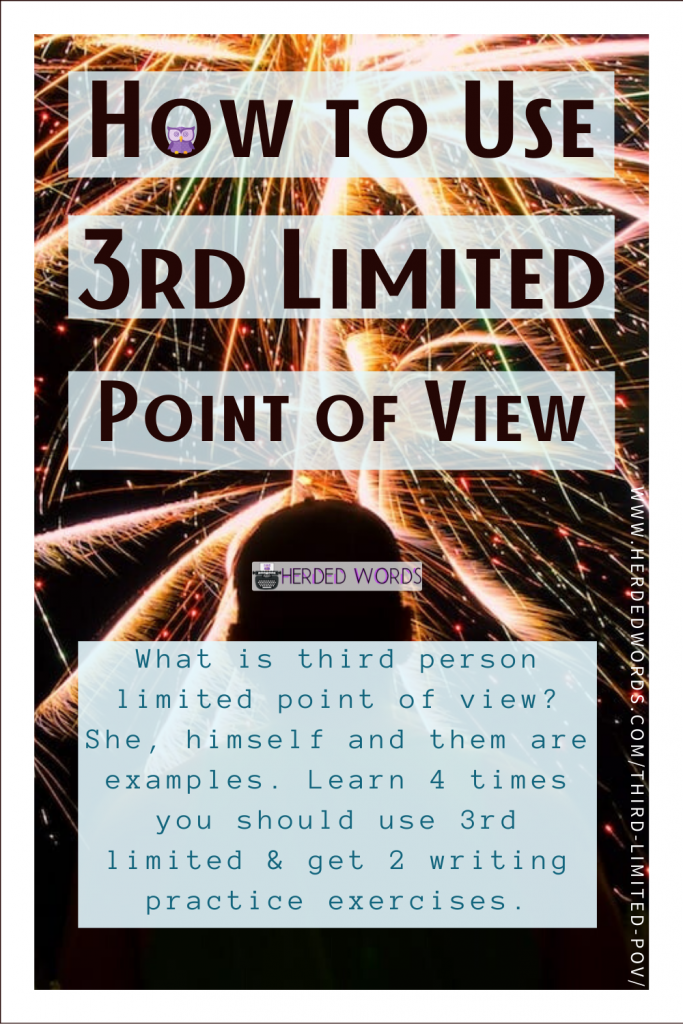
Third limited is a pretty common point of view. Practice it until you’re a master!
And hey, share your exercises in the comments.
Once you’re ready, you should move on to Writing a Story in Omniscient Point of View next.
Like this post? Please PIN IT and follow me on social media. Thanks!
